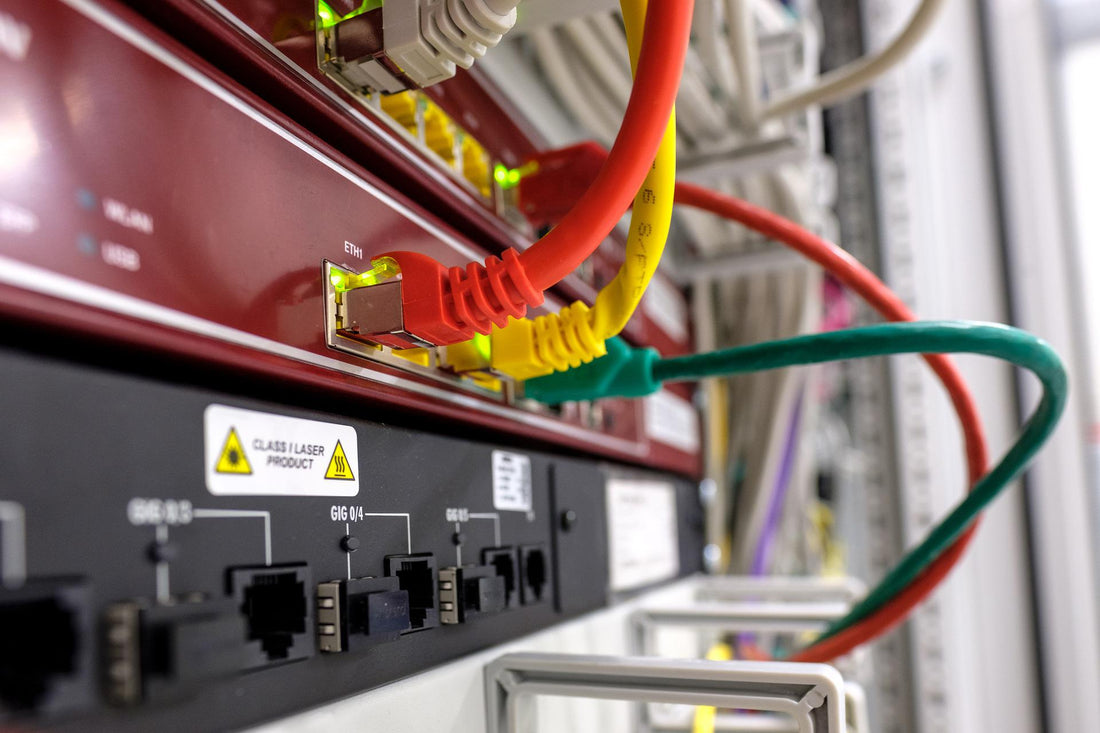SFP+ and SFP28 optical transceivers are small pluggable devices which are used to connect network devices, such as switches and routers, to optical fibres and transmit and receive data at high speeds.
These modules are used to connect:
- To switches (layer 2) and to then on to a distribution point, typically another switch where the data is aggregated or disaggregated
- To Routers (layer 3) which are typically used to transmit data across
- Gateway switches (layer 3) where these connect to a network or key interface to the outside world (www as we know it
- NIC cards (layer 2) which are network interface cards and these can be used in computers and other chassis where a high speed connection is required
What is an SFP+ Transceiver?
A quick overview as to what SFP+ and SFP28 denote:
- SFP+ means Small Form factor Pluggable transceivers which operates up to 10Gbps (this is the ‘+’ part)
- SFP28 means Small Form factor Pluggable transceiver which operates at a throughout of 25Gbps
Although the pinouts of an SFP+ and SFP28 are mating compatible, the SFP+ is designed to operate at speeds up to 10 Gbps whereas an SFP28 operates at 25Gbps, 10Gbps and even down to 1Gbps.
Caution needs to be taken here as the NIC, switch, or router may only be specified to operate at the selected rate (10Gbps NIC will typically only operate at a nominal 10Gbps).
There are industry standards such as IEEE and multisource agreements (MSA) which most module vendors will comply with. Westbury Photonics tests all of its optical modules and components and only selects from vendors who have rigorous manufacturing and testing facilities.
The SFP+ modules comply with IEEE 802.3 and it will depend on the reach (e.g. IEEE 802.3ae for LR) . It will also be compatible with SFF-8472
The SFP28 modules comply with IEEE 802.3by (up to 40km) and SFF-8472.
SFP+ transceivers are commonly used in 10 Gigabit Ethernet applications, such as switching and routing of data. Although they can also be used in other high-speed applications such as . SFP+ transceivers typically operate at data rates at around 10 Gbpsand either be used as a grey link (1310nm) CWDM (1310nm window) or DWDM (1550nm), making them well-suited for use in next-generation networks in enterprise, backhaul, and point to point links.
When comparing SFP+ transceivers to other types of transceivers, it's important to keep in mind that SFP+ transceivers are not compatible with SFP ports. This means that if you're looking to upgrade your network to 10 Gigabit Ethernet, you'll need to purchase new SFP+ transceivers and switches with the appropriate SFP+ ports. While the initial investment may be higher, the benefits of 10 Gigabit Ethernet include higher data rates, lower power consumption, and smaller form factors make it well worth the cost.
What is an SFP28 Transceiver?
SFP28 is a type of SFP+ transceiver used for optical fibre communication systems and is being widely used in wireless fronthaul and some backhaul links for 5G/6G using the common CPRI standard.
SFP28 transceivers are also compatible with SFP+ ports, which means they can be used in devices and switches that support both SFP28 and SFP+. SFP28 transceivers typically have a shorter reach than SFP+ transceivers, but there are also long-range SFP28 transceivers available in the market. SFP28 transceivers are used in a variety of applications, including data centre networking, enterprise networking, and telecom.
The Differences
The main difference between SFP+ and SFP28 transceivers is the data rate. SFP+ transceivers have a data rate of 10 Gbps, while SFP28 transceivers have a data rate of 25 Gbps. This means that SFP28 transceivers can transmit data at higher speeds than SFP+ transceivers.
Another difference between SFP+ and SFP28 transceivers is their form factor. SFP+ transceivers are smaller than SFP28 transceivers. This makes them more suitable for use in applications where space is limited.
In terms of compatibility, SFP+ transceivers are compatible with both 10Gbps and 25Gbps equipment. SFP28 transceivers, on the other hand, are only compatible with 25 Gbps equipment.
So, if you need a high-speed transceiver that can transmit data at up to 25Gbps, then you should choose an SFP28 transceiver. If you need a smaller transceiver that is compatible with both 10Gbps and 25Gbps equipment, then you should choose an SFP+ transceiver.
If you are still unsure and would like some additional technical support to choose the correct transceiver for your application, get in contact with us and we would be happy to help.
